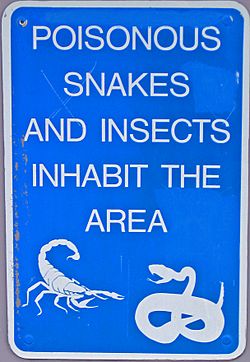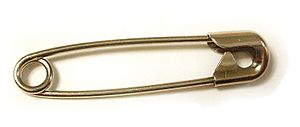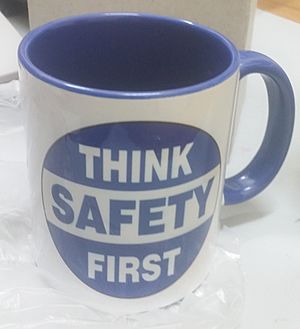Safety facts for kids
Safety is the state of being "safe", the condition of being protected from harm.
Safety can also refer to the control of recognized hazards in order to achieve an acceptable level of risk.
Some examples:
- The police keep public safety, which help stop crimes happening.
- Safety hats protect the head from injury.
- Houses provide safety from the weather.
Contents
Limitations
Safety can be limited in relation to some guarantee or a standard of insurance to the quality and unharmful function of an object or organization. It is used in order to ensure that the object or organization will do only what it is meant to do.
It is important to realize that safety is relative. Eliminating all risk, if even possible, would be extremely difficult and very expensive. A safe situation is one where risks of injury or property damage are low and manageable.
When something is called safe, this usually means that it is safe within certain reasonable limits and parameters.
For example, riding a bike is safe unless you ride it over rocky ground or in a way that can damage it's components. Taking medication is safe as long as you take the correct dose.
Types
There is a distinction between products that meet standards, that are safe, and that merely feel safe. The highway safety community uses these terms:
Normative
Normative safety is achieved when a product or design meets applicable standards and practices for design and construction or manufacture, regardless of the product's actual safety history.
Substantive
Substantive or objective safety occurs when the real-world safety history is favorable, whether or not standards are met.
Perceived
Perceived or subjective safety refers to the users' level of comfort and perception of risk, without consideration of standards or safety history.
For example, traffic signals are perceived as safe, yet under some circumstances, they can increase traffic crashes at an intersection. Traffic roundabouts have a generally favorable safety record yet often make drivers nervous.
Security
Also called social safety or public safety, security addresses the risk of harm due to intentional criminal acts such as assault, burglary or vandalism.
Measures
Safety measures are activities and precautions taken to improve safety, i.e. reduce risk related to human health. Common safety measures include:
- Chemical analysis
- Destructive testing of samples
- Drug testing of employees, etc.
- Examination of activities by specialists to minimize physical stress or increase productivity
- Geological surveys to determine whether land or water sources are polluted, how firm the ground is at a potential building site, etc.
- Government regulation so suppliers know what standards their product is expected to meet.
- Industry regulation so suppliers know what level of quality is expected. Industry regulation is often imposed to avoid potential government regulation.
- Instruction manuals explaining how to use a product or perform an activity
- Instructional videos demonstrating proper use of products
- Root cause analysis to identify causes of a system failure and correct deficiencies.
- Internet safety or Online Safety, is protection of the user's safety from cyber threats or computer crime in general.
- Periodic evaluations of employees, departments, etc.
- Physical examinations to determine whether a person has a physical condition that would create a problem.
- Process safety management is an analytical tool focused on preventing releases of highly hazardous chemicals.
- Safety margins/Safety factors. For instance, a product rated to never be required to handle more than 200 pounds might be designed to fail under at least 400 pounds, a safety factor of two. Higher numbers are used in more sensitive applications such as medical or transit safety.
- Stress testing subjects a person or product to stresses in excess of those the person or product is designed to handle, to determining the "breaking point".
- Training of employees, vendors, product users
- Visual examination for dangerous situations such as emergency exits blocked because they are being used as storage areas.
- Visual examination for flaws such as cracks, peeling, loose connections.
- X-ray analysis to see inside a sealed object such as a weld, a cement wall or an airplane outer skin.
Related pages
Images for kids
-
"After whiskey driving risky" Safety road sign in Ladakh, India








